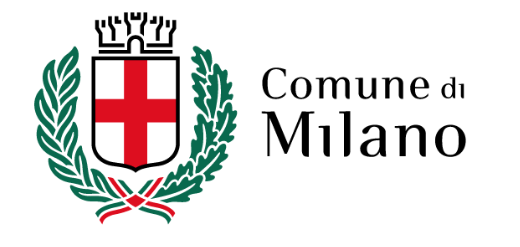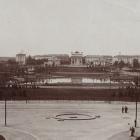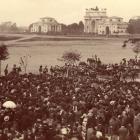The park was created on the orders of Gian Galeazzo Visconti, at the end of the14th century. It was built on a broad stretch of land to the north of the castle and consisted of both cultivated fields and an ornamental garden. In 1457 Carlo da Cremona expanded the gardens for Francesco Sforza. Being avid hunters, the Sforzas had the area surrounded with defensive walls in 1460 and had it populated with roe deer, hares, pheasants and partridges brought in from lake Como, Varese and Seprio. Adjacent to the hunting grounds proper were gardens containing a fishing pond, an orchard and an expanse of agricultural land on which wheat, oats, millet and rye were cultivated. During the reign of Ludovico il Moro, at the height of Milanese court's influence, Leonardo da Vinci himself was charged with organising ceremonies and parties in the Ducal Gardens. After the fall of the Sforzas and the arrival of their Spanish successors in the 1500s the vast area fell into disrepair. Part of it was used for the construction of the Spanish fortifications, while for centuries, the area of the park functioned as a parade ground for the foreign troops garrisoned at the castle.
- Milan Castle
- Museums Libraries Archives
- Museo Pietà Rondanini - Michelangelo
- Museo d'Arte Antica
- Sala delle Asse - Leonardo da Vinci
- Pinacoteca
- Museo dei Mobili e delle Sculture Lignee
- Museo delle Arti Decorative
- Museo degli Strumenti Musicali
- Museo Archeologico - Sezione Preistoria e Protostoria
- Museo Archeologico - Sezione Egizia
- Raccolta delle Stampe "Achille Bertarelli"
- Gabinetto dei Disegni
- Archivio Fotografico
- Archivio Storico Civico e Biblioteca Trivulziana
- Biblioteca d'Arte
- Biblioteca Archeologica e Numismatica
- Casva (Centro di Alti Studi sulle Arti Visive)
- Ente Raccolta Vinciana
- Gabinetto Numismatico e Medagliere
- Opere dei musei in movimento
- The Castle and Milan
- Media gallery
- Plan your own tour














